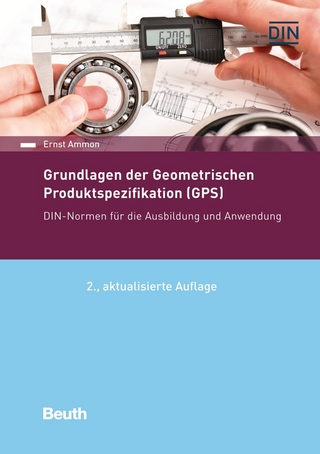
Principles of Optimal Design
Modeling and Computation
Seiten
2000
|
2nd Revised edition
Cambridge University Press (Verlag)
978-0-521-62215-8 (ISBN)
Cambridge University Press (Verlag)
978-0-521-62215-8 (ISBN)
- Titel erscheint in neuer Auflage
- Artikel merken
Zu diesem Artikel existiert eine Nachauflage
Thorough, practical coverage of latest development in optimization theory and practice.
Principles of Optimal Design puts the concept of optimal design on a rigorous foundation and demonstrates the intimate relationship between the mathematical model that describes a design and the solution methods that optimize it. Since the first edition was published, computers have become ever more powerful, design engineers are tackling more complex systems, and the term optimization is now routinely used to denote a design process with increased speed and quality. This second edition takes account of these developments and brings the original text thoroughly up to date. The book now includes a discussion of trust region and convex approximation algorithms. A new chapter focuses on how to construct optimal design models. Three new case studies illustrate the creation of optimization models. The final chapter on optimization practice has been expanded to include computation of derivatives, interpretation of algorithmic results, and selection of algorithms and software. Both students and practising engineers will find this book a valuable resource for design project work.
Principles of Optimal Design puts the concept of optimal design on a rigorous foundation and demonstrates the intimate relationship between the mathematical model that describes a design and the solution methods that optimize it. Since the first edition was published, computers have become ever more powerful, design engineers are tackling more complex systems, and the term optimization is now routinely used to denote a design process with increased speed and quality. This second edition takes account of these developments and brings the original text thoroughly up to date. The book now includes a discussion of trust region and convex approximation algorithms. A new chapter focuses on how to construct optimal design models. Three new case studies illustrate the creation of optimization models. The final chapter on optimization practice has been expanded to include computation of derivatives, interpretation of algorithmic results, and selection of algorithms and software. Both students and practising engineers will find this book a valuable resource for design project work.
Preface; Notation; List of symbols; 1. Optimization models; 2. Model construction; 3. Model boundedness; 4. Interior optima; 5. Boundary optima; 6. Parametric and discrete optima; 7. Local computation; 8. Principles and practice; References; Author index; Subject index.
| Erscheint lt. Verlag | 10.7.2000 |
|---|---|
| Zusatzinfo | 23 Tables, unspecified; 102 Line drawings, unspecified |
| Verlagsort | Cambridge |
| Sprache | englisch |
| Maße | 186 x 263 mm |
| Gewicht | 900 g |
| Themenwelt | Informatik ► Weitere Themen ► CAD-Programme |
| Mathematik / Informatik ► Mathematik ► Angewandte Mathematik | |
| Mathematik / Informatik ► Mathematik ► Finanz- / Wirtschaftsmathematik | |
| Technik ► Maschinenbau | |
| ISBN-10 | 0-521-62215-8 / 0521622158 |
| ISBN-13 | 978-0-521-62215-8 / 9780521622158 |
| Zustand | Neuware |
| Haben Sie eine Frage zum Produkt? |
Mehr entdecken
aus dem Bereich
aus dem Bereich
Buch | Softcover (2023)
Beuth (Verlag)
99,00 €
Einführung in die Geometrische Produktspezifikation
Buch | Softcover (2023)
Europa-Lehrmittel (Verlag)
20,70 €



